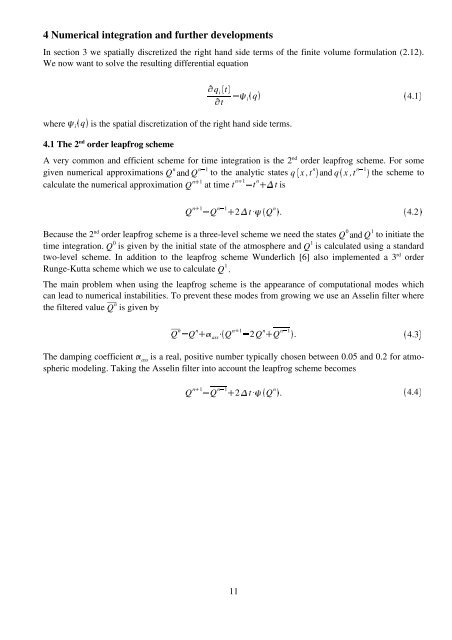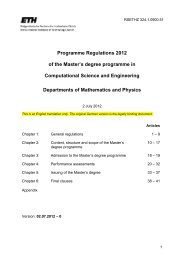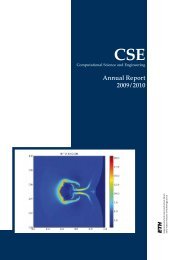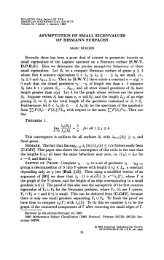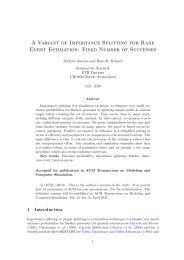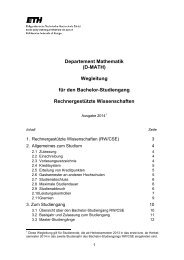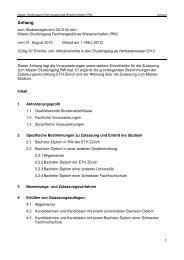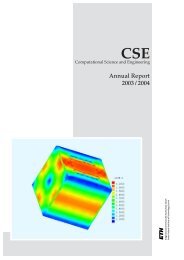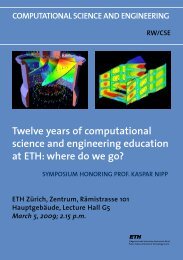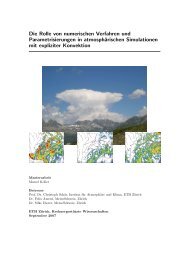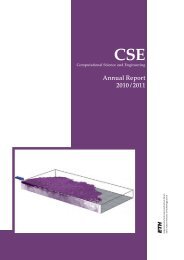A 2D Finite Volume Non-hydrostatic Atmospheric Model ...
A 2D Finite Volume Non-hydrostatic Atmospheric Model ...
A 2D Finite Volume Non-hydrostatic Atmospheric Model ...
Create successful ePaper yourself
Turn your PDF publications into a flip-book with our unique Google optimized e-Paper software.
ÌÌÐQ nØ Q nÙ2Ú assÛÝÜ Q nÓ 1Þ 2Q nÙ Q nÔ 1ß . à 4.3áÐ4 Numerical integration and further developmentsIn section 3 we spatially discretized the right hand side terms of the finite volume formulation (2.12).We now want to solve the resulting differential equationq i t Î Íti Í qÎ Ñ 4.1ÒÏÐwhere ¿ i À qÁ is the spatial discretization of the right hand side terms.4.1 The 2 nd order leapfrog schemeA very common and efficient scheme for time integration is the 2 nd order leapfrog scheme. For somegiven numerical approximations Q n and Q 1 to the à analytic states q x ,t à and q x ,t the scheme tocalculate the numerical approximation Q n 1 at time t t nÄ t nÅ is1Ä nÉ*Ê 1È nÇ nÆBecause the 2Ñ 4.2ÒQ 1 Q 2 nd order leapfrog scheme is a three-level scheme we need theÖ × Í t Q n 1Õ Î .nÓ nÔ Ïstates Q 0 and Q 1 to initiate thetime integration. Q 0 is given by the initial state of the atmosphere and Q 1 is calculated using a standardtwo-level scheme. In addition to the leapfrog scheme Wunderlich [6] also implemented a 3 rd orderRunge-Kutta scheme which we use to calculate Q 1 .The main problem when using the leapfrog scheme is the appearance of computational modes whichcan lead to numerical instabilities. To prevent these modes from growing we use an Asselin filter wherethe filtered value Q n is given byThe damping coefficient Ë ass is a real, positive number typically chosen between 0.05 and 0.2 for atmosphericmodeling. Taking the Asselin filter into account the leapfrog scheme becomesà 4.4áQ nÓ 1 ÏQ nÔ 1Õ 2 Ö t ×Í Q n Î .11


